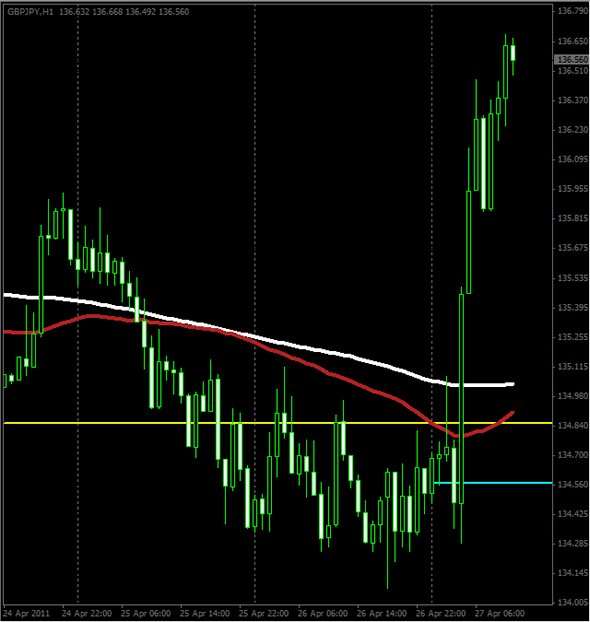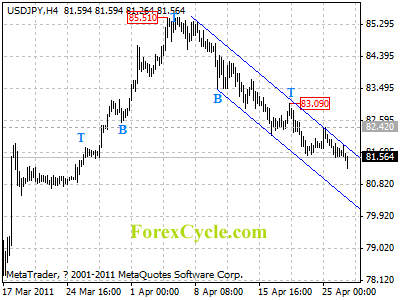By Sara Nunnally, Editor, Smart Investing Daily, taipanpublishinggroup.com
Have you heard the expression, “Offense wins games, defense wins championships”? If so, you might want to take a look at your investment portfolio and find out if you’re ready for the current bull market to end. Check this out from Forbes’ Great Speculations blog:
Exactly a year ago today the stock market was celebrating first-quarter earnings reports, reaching for new highs, after recovering from a stumble in February on concerns about situations outside the U.S., notably rising inflation in Asia and the debt crisis in Europe.
This week the stock market is celebrating first-quarter earnings reports, reaching for new highs, after recovering from a stumble in February on concerns about situations outside the U.S., notably inflation in Asia, the return of the debt crisis in Europe, and the earthquake/tsunami disaster in Japan.
But that’s not all… Other similarities are creating some suspicious investors.
The Forbes article notes a string of negative economic reports on jobs and housing and consumer confidence over the past few months mirrors the same reports from last year. Even commentary from the talking heads and the Federal Reserve is similar enough to make some analysts take pause.
Why? I think this chart says it all:

View larger chart
This is a two-year chart of the S&P 500. The red circle indicates the month of April, and the red arrow shows the subsequent fall — a loss of 16% in two months.
With so many economic issues mirroring this time last year, we could be in for another harsh pullback.
Another Forbes article quotes Carl von Clausewitz, author of On War and military strategist during the Prussian War, as saying in part, “The great uncertainty of all data in war is a peculiar difficulty, because all action must, to a certain extent, be planned in a mere twilight.”
Every investment plan is made on assumptions. These assumptions are based on things that are not certain. This means as an investor, you have to have a certain amount of flexibility, balanced with hard-and-fast rules for changing your investment strategy.
For example, you may have bought a particular stock as a long-term buy-and-hold asset… maybe something to give the grandkids when they graduate college… but something drastically changed within the company that affected its value. You may have to change your perspective, and sell that company because it no longer reflects your strategic goal.
Knowing when to sell is just as important and knowing what to buy.
In general there are three reasons to sell: You made a mistake in analyzing the fundamentals; the stock’s valuation isn’t reflected by the price; and the price has climbed drastically, and it’s time to take gains.
But these three reasons are good barometers when the market is still chugging along.
When the market turns against you, it’s a whole other ball game. That’s when you have to really pay close attention to each holding.
(Investing doesn’t have to be complicated. Sign up for Smart Investing Daily and let me and my fellow editor Jared Levy simplify the stock market for you with our easy-to-understand investment articles.)
In essence, you have to become a position trader. These traders are much more active than traditional buy-and-hold investors. A position trader is pretty much synonymous with a trend trader. Position traders jump into a trending stock — a stock whose share price is making higher highs (or lower lows for those who short stocks) — and stays in for as long as the trend remains intact.
They don’t have price targets. They get out when the company breaks out of its established trend.
This is important right now. If the markets are headed for two months of losses, you should to be prepared to sell some stocks and limit losses.
Trailing stop-losses might be effective in this market, in case the markets do decide to climb a little higher here. A trailing stop-loss is a percentage-based exit point that moves higher with share prices. So let’s say Company X is trading for $10, and your trailing stop is 10%. Your initial exit point is $9. But if Company X climbs to $15, the trailing stop moves to $13.50.
Trailing stops can help you lock in gains, rather than having a fixed exit point that might be below your initial entry price.
If you are a position trader you can also set a fixed stop-loss at the bottom of the current trend, which can keep you in a position for a longer period of time than a trailing stop, particularly if it’s a conservative percentage.

View larger chart
On this chart, a position trader could set a stop-loss to a corresponding point on the green trend line. He or she might have to check in often and change this stop-loss should the stock — in this case Exxon Mobil (XOM:NYSE) — continue to climb higher without coming back to the green line.
Some buy-and-hold investors will choose to just hedge their long-term positions with options, however, rather than have to get out of potentially thousands of shares of a particular company.
It’s not a bad strategy, and Jared can actually talk you through buying options in his service WaveStrength Options Weekly.
But not all companies offer options, so knowing when to sell a company is sometime your only recourse for when the market turns against you.
We’ve started to see some consolidation in the S&P 500, which could signal a pullback in the near future, particularly if the poor economic issues persist. We’re also seeing some pretty low trading volume on some of the indexes, which could make trading a little more volatile…
So be ready for unexpected price swings, and protect your investment portfolio accordingly.
Editor’s Note: Our team of financial analysts has just stumbled on a hidden market “sector” that has shown some stunning 10-fold gains. Get the details on this financial investment opportunity.
About the Author
Sara is Managing Editor of Smart Investing Daily. As Senior Research Director and global correspondent, Sara Nunnally’s diverse resume includes studies in art history, computer science and financial research. She has appeared on news media such as Forbes on Fox, Fox News Live, and CNBC’s Squawk Box, as well as numerous radio shows around the country. Most recently, Sara co-authored a book with Sandy Franks called, Barbarians of Wealth.
As Senior Research Director, global correspondent and managing editor of Smart Investing Daily, Sara has traveled all over the world in search of the best investment opportunities to recommend to her readers, be they in developed economies like France and Italy, in emerging markets like the Czech Republic and Poland, or in frontier terrain like Vietnam and Morocco. Her unique “holistic” approach of boots-on-the-ground research has given her an edge in today’s financial marketplace as she searches for the next investment opportunities in hot sectors like alternative energy, currency markets and commodities.





